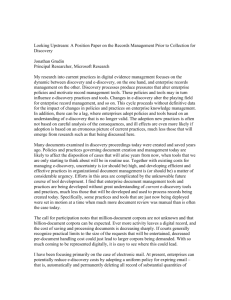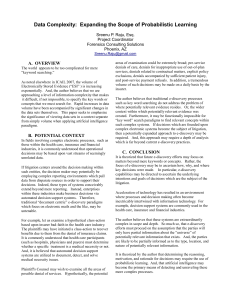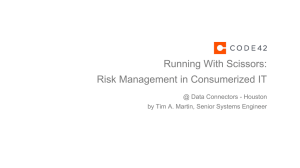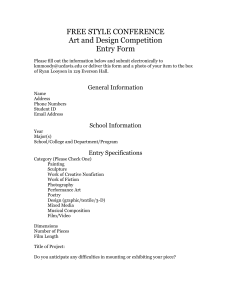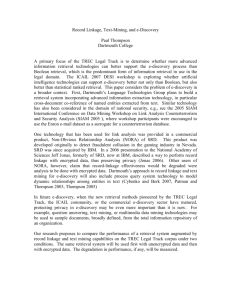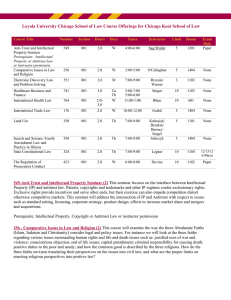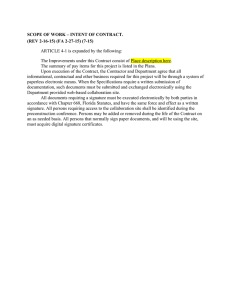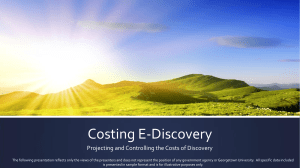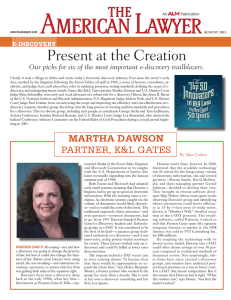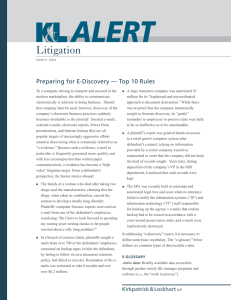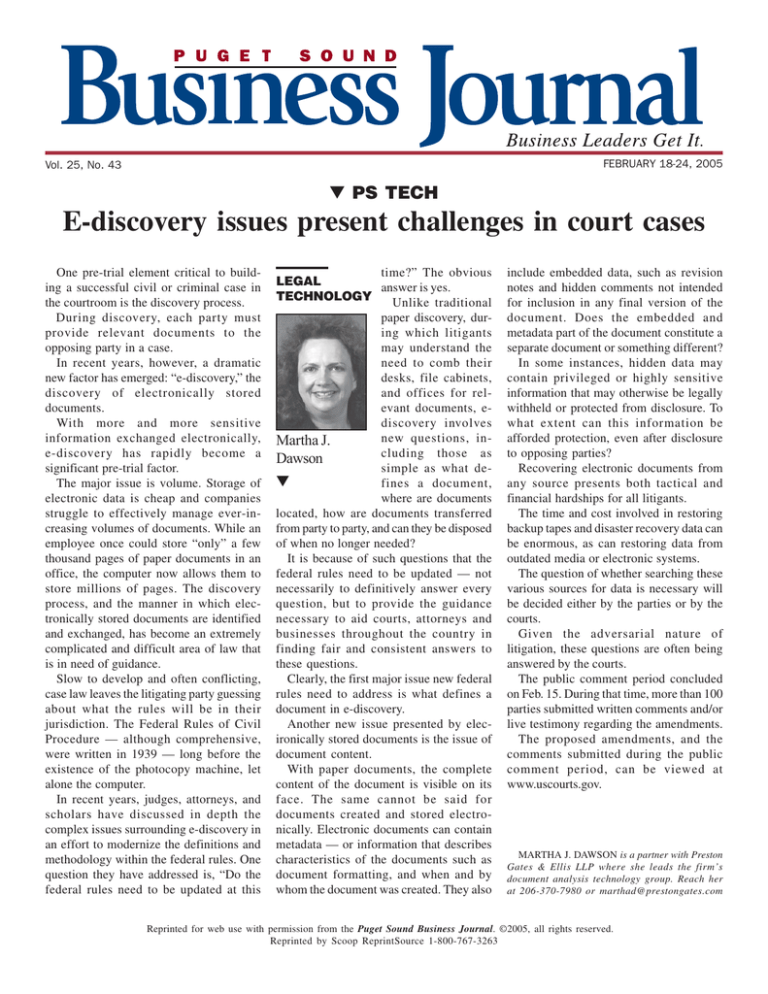
FEBRUARY 18-24, 2005
Vol. 25, No. 43
V PS TECH
E-discovery issues present challenges in court cases
One pre-trial element critical to building a successful civil or criminal case in
the courtroom is the discovery process.
During discovery, each party must
provide relevant documents to the
opposing party in a case.
In recent years, however, a dramatic
new factor has emerged: “e-discovery,” the
discovery of electronically stored
documents.
With more and more sensitive
information exchanged electronically,
e-discovery has rapidly become a
significant pre-trial factor.
The major issue is volume. Storage of
electronic data is cheap and companies
struggle to effectively manage ever-increasing volumes of documents. While an
employee once could store “only” a few
thousand pages of paper documents in an
office, the computer now allows them to
store millions of pages. The discovery
process, and the manner in which electronically stored documents are identified
and exchanged, has become an extremely
complicated and difficult area of law that
is in need of guidance.
Slow to develop and often conflicting,
case law leaves the litigating party guessing
about what the rules will be in their
jurisdiction. The Federal Rules of Civil
Procedure — although comprehensive,
were written in 1939 — long before the
existence of the photocopy machine, let
alone the computer.
In recent years, judges, attorneys, and
scholars have discussed in depth the
complex issues surrounding e-discovery in
an effort to modernize the definitions and
methodology within the federal rules. One
question they have addressed is, “Do the
federal rules need to be updated at this
time?” The obvious
LEGAL
answer is yes.
TECHNOLOGY
Unlike traditional
paper discovery, during which litigants
may understand the
need to comb their
desks, file cabinets,
and offices for relevant documents, ediscovery involves
new questions, inMartha J.
cluding those as
Dawson
simple as what deV
fines a document,
where are documents
located, how are documents transferred
from party to party, and can they be disposed
of when no longer needed?
It is because of such questions that the
federal rules need to be updated — not
necessarily to definitively answer every
question, but to provide the guidance
necessary to aid courts, attorneys and
businesses throughout the country in
finding fair and consistent answers to
these questions.
Clearly, the first major issue new federal
rules need to address is what defines a
document in e-discovery.
Another new issue presented by elecironically stored documents is the issue of
document content.
With paper documents, the complete
content of the document is visible on its
face. The same cannot be said for
documents created and stored electronically. Electronic documents can contain
metadata — or information that describes
characteristics of the documents such as
document formatting, and when and by
whom the document was created. They also
include embedded data, such as revision
notes and hidden comments not intended
for inclusion in any final version of the
document. Does the embedded and
metadata part of the document constitute a
separate document or something different?
In some instances, hidden data may
contain privileged or highly sensitive
information that may otherwise be legally
withheld or protected from disclosure. To
what extent can this information be
afforded protection, even after disclosure
to opposing parties?
Recovering electronic documents from
any source presents both tactical and
financial hardships for all litigants.
The time and cost involved in restoring
backup tapes and disaster recovery data can
be enormous, as can restoring data from
outdated media or electronic systems.
The question of whether searching these
various sources for data is necessary will
be decided either by the parties or by the
courts.
Given the adversarial nature of
litigation, these questions are often being
answered by the courts.
The public comment period concluded
on Feb. 15. During that time, more than 100
parties submitted written comments and/or
live testimony regarding the amendments.
The proposed amendments, and the
comments submitted during the public
comment period, can be viewed at
www.uscourts.gov.
MARTHA J. DAWSON is a partner with Preston
Gates & Ellis LLP where she leads the firm’s
document analysis technology group. Reach her
at 206-370-7980 or marthad@prestongates.com
Reprinted for web use with permission from the Puget Sound Business Journal. ©2005, all rights reserved.
Reprinted by Scoop ReprintSource 1-800-767-3263


